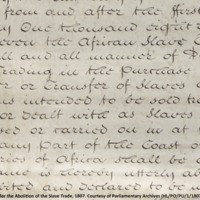
Seeing Slavery
The Potteries Museum and Art Gallery in Stoke-on-Trent held the Seeing Slavery exhibition from October to December 2007, with an associated programme of events and activities. Objects from the museum's collection relating to slavery and abolition were on display, including an 18th century punch bowl, inscribed with 'Success to the Africa Trade'. The museum commissioned new work by the artist Pogus Caesar: the piece '80 lbs of chains' included a soundscape depicting the sounds of a slave ship. The museum held digital workshops in which visitors were able to create their own soundtrack to the exhibits.
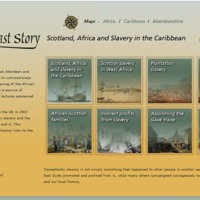
A North East Story: Scotland, Africa and Slavery in the Caribbean
This online exhibition and learning resource linking the history of transatlantic slavery to North East Scotland was organised by an Aberdeen and Aberdeenshire Bicentenary Committee, including representatives from Aberdeenshire Council, Aberdeen City Council, the University of Aberdeen, the Robert Gordon University and the African and African-Caribbean communities. It followed on from a service of commemoration and a series of public lectures sponsored by the Committee in 2007. The exhibition logo is inspired by the mythical Sankofa bird, a cultural symbol of the Akan-speaking peoples of Ghana in West Africa. Featured here are a number of resources available to download from the North East Story website.
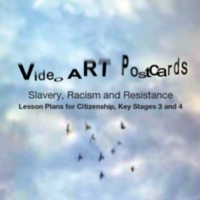
Video ART Postcards
To mark the bicentenary, Manifesta (a not for profit company delivering projects addressing cultural diversity) and the Runnymede Trust (an independent policy research organisation focusing on equality and justice) joined forces to launch a youth and digital media initiative, Video ART (Anti-Racist Trails) Postcards. The project explored connections between slavery, colonialism and contemporary issues of racism and related injustice. In the summer of 2007, two groups of teenagers aged 14-19 from the London Borough of Newham participated in workshops to uncover sites related to historical racism and anti-racism in the West India Docks area of London, assisted by video artists and historians. Using video for self-expression, each participant interpreted this history and heritage by producing a short personal video or 'postcard' - there were 33 videos in total. The videos were made available on an online resource, and a Teacher's Guide was created to be used alongside the website.
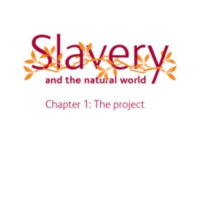
Slavery and the Natural World
In consultation with local community groups, in 2007 the Natural History Museum commissioned new research into its collections that link slavery and the natural world. The research uncovered experiences of enslaved people and the use of plants in their everyday life, as food, medicines and poisons. It also examined the complex relationships between enslaved people and naturalists exploring newly-colonised lands. The museum ran a series of public events, co-hosted by Race on the Agenda, which aimed to bring the historical, scientific and public viewpoints together. It created online educational resources on themes such as Commercial Plants, Everyday Life, Diet and Nutrition, and Resistance. The museum also developed cross-curricular ideas for school lessons in Science using the context of slavery, looking at foods across different cultures, for example.
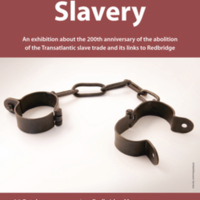
Redbridge and Slavery
Redbridge Museum's exhibition to mark the bicentenary examined the London Borough of Redbridge's connections to the slave trade and abolition. These links included local resident Josiah Child, once Governor of the East India Company, an investor in the Royal African Company and owner of plantations in Jamaica. The Mellish family of Woodford had connections with the West India Docks in London, built for the sugar trade. Alexander Stewart of Woodford owned Jamaican plantations and acted on behalf of owners of enslaved Africans in compensation claims after abolition. The exhibition also examined church records detailing some of the Black residents of Redbridge in the 17th and 18th centuries. Music from the Caribbean island of Dominica was included, as was a series of personal responses to the bicentenary by local residents.
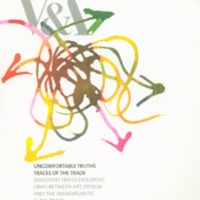
Uncomfortable Truths
Uncomfortable Truths at the Victoria and Albert Museum sought to expose how embedded the transatlantic slave trade was within British culture during the 18th and 19th centuries through art and design. A series of five trails - 'Traces of the Trade' - explored the permanent collections on display through the following themes: Consuming the Black Atlantic, Black Servants in British Homes, Britain and the West Indies, Representing Slavery and Abolitionism, Gold and Slaves Transnational Trade Links. An exhibition of contemporary art examined the impact of the legacies of slavery on modern art and design. The Victoria and Albert Museum commissioned new works by Yinka Shonibare, Romauld Hazoume, Julien Sinzogan and Keith Piper. These and other contemporary interventions by a total of 11 artists were displayed throughout the museum. This exhibition later toured to Ferens Art Gallery in Hull.
The 'Truth and Rights' season of events highlighted often untold stories of Black British heroes, including focus on the actor Ira Aldridge. Visitors were also offered discussions, debates, displays and an eight week free art course. A two-day conference, 'From Cane Field to Tea Cup: The Impact of the Transatlantic Slave Trade on Art and Design' focused on V&A collections took place in February 2007.
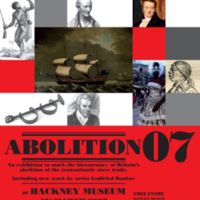
Abolition 07
Hackney Museum's Abolition 07 exhibition told the story of British involvement in the transatlantic slave trade, the resistance to it, and its abolition, and in particular emphasised the involvement of Hackney's residents in the abolition movement. The display included new artwork by Godfried Donkor in collaboration with young Hackney artists. A film of interviews with Hackney residents, Hear My Voice, was produced. Over 1200 children from Hackney Primary Schools took part in poetry workshops at the museum with poets Adisa and Baden Prince. Their poems and responses were published in the booklet 'And Still I Rise'.
The research into Hackney's connections to the transatlantic slave trade continued in 2013-2015 with 'Local Roots / Global Routes', a collaborative project between Hackney Museum and Archives and the Legacies of British Slave-ownership project.
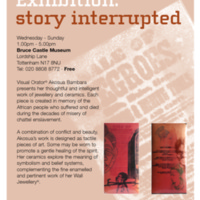
Story Interrupted
Story Interrupted was an exhibition of jewellery and ceramics by visual orator Akosua Bambara at Bruce Castle Museum. Each piece was created in memory of African people who suffered and died in enslavement.
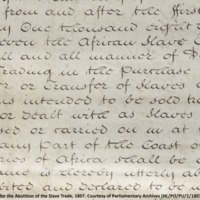
Unquenchable Spirit
Commissioned by The New Art Gallery Walsall, Unquenchable Spirit was an installation piece, informed by community engagement activities with local people, which included a month long artist residency by the artist Pauline Bailey. The community collaboration project included the local support group ACSERG (African Caribbean Social and Economic Regeneration Group). The piece consists of a circle of whipping posts with neck chains and the names of African tribes on piles of cotton sacks in the centre.
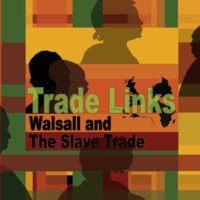
Trade Links: Walsall and the Slave Trade
An exhibition at Walsall Museum looked at Walsall's links with the slave trade, the background to the Abolition Act of 1807, and the legacies of slavery. Walsall's metal industry included chain making by local women of Cradley Heath, and the manufacture of guns used to trade for captive Africans. The exhibition was accompanied by a programme of presentations, lectures and workshops, including art sessions with local residents and the artist Pauline Bailey. Part of the wider project featured an online resource 'Abolition WYA' by Walsall Youth Arts, which encouraged young people to explore the topic of slavery and contribute poems, visual arts and music to express their views. Some of the images featured on the site are pictured here.
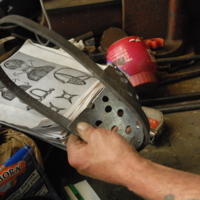
Sugar Coated Tears
This exhibition explored the links between industry in the West Midlands and the commercial gains of slavery. Wolverhampton's role as a manufacturer of iron was crucial to the economy of slavery, as implements of restraint and punishment were needed to repress those who fought their enslavement. The exhibition emerged from a collaboration between photographer Vanley Burke and blacksmith Lofty Wright. They re-created 40 cast iron instruments used in the slave trade: forked wooden yokes that controlled captives; irons, muzzles and braces that were used to constrain and as punishment. Each of the metal items was symbolically coated in sugar.
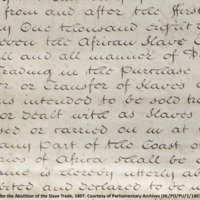
Guernsey and the Slave Trade
A display in the entrance foyer of Guernsey Museum in 2007 explored the island's connections with slavery and the slave trade. Relevant items from the museum's collection included a slave collar and chain from a slaver intercepted by a Guernsey captain on anti-slavery patrols, and a 17th-century portrait of Anne de Beauvoir and a slave child. Guernsey was involved in the transatlantic slave trade via islanders directly involved in the traffic (for example, Thomas Ebworthy of the ship 'Anne Galley'); ships known to be involved, such as the 'African' and the 'Fanny'; and islanders' involvement with the supply of goods or services.
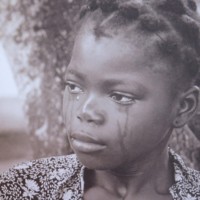
Remembering Slavery Exhibition
Remembering Slavery 2007 involved museums, galleries and other cultural organisations across the North East of England in a programme of exhibitions, events, performances, lectures and activities to explore the themes of slavery and abolition, and identify connections with the region.
The Remembering Slavery exhibition focused on objects, paintings, documents and other historical material relating to the transatlantic slave trade and its legacy. The exhibition and associated programme of activities opened at the Discovery Museum in Newcastle and then toured to South Shields Museum and Art Gallery; Sunderland Museum and Winter Gardens; and the Laing Art Gallery. Whilst at the Discovery Museum, the historical exhibition was accompanied by a photographic exhibition, ‘Human Traffic’, produced by Anti-Slavery International, documenting the trafficking of children in Benin and Gabon in West Africa. Whilst at the Laing Art Gallery, the exhibition was shown alongside ‘La Bouche du Roi’ by Romauld Hazoumé, a contemporary installation based on the ‘Brookes’ slave ship.
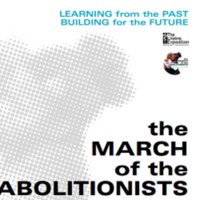
The March of the Abolitionists
The Lifeline Expedition began in 2000 as a reconciliation journey linking the European and African nations. The March of the Abolitionists was organised for 2007, aiming to bring an apology for the slave trade (especially the role of the church); to promote understanding of slavery and abolition by engaging with schools and the media; and to remember black and white abolitionists of the past, and of current campaigns. For the first stage in March 2007 (the Meridian Walk), a group of walkers included Africans and descendants of enslaved Africans, while white people from the former slave trading nations wore yokes and chains on their 250-mile journey from Hull to London. In the capital they joined the Walk of Witness at Westminster, led by the Archbishops of Canterbury and York. The second stage of the march (the Sankofa Walk) linked the former slave ports of London, Liverpool and Bristol in June and July 2007.